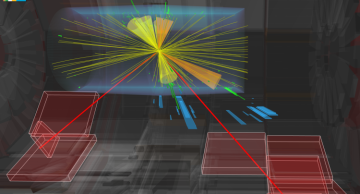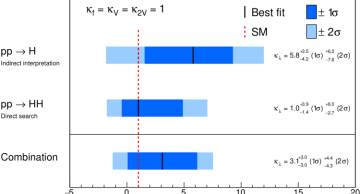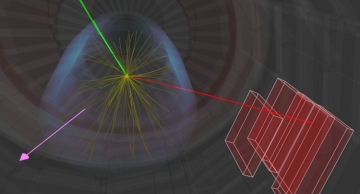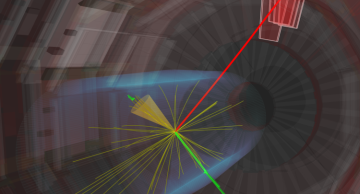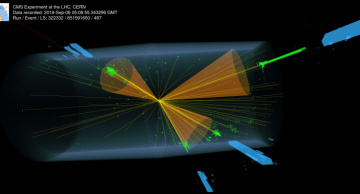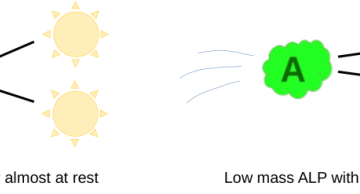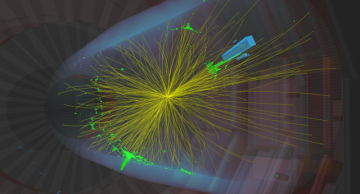A new CMS paper describes how the CMS experiment can squeeze more physics out of the LHC data by using smarter data selection/reduction techniques.
The Large Hadron Collider produces an avalanche of data; the beams collide 40 million times per…
The Standard Model (SM) of particle physics has been a cornerstone of our understanding of the subatomic realm, providing precise predictions, many of which have been tested by the ATLAS and CMS experiments at the CERN LHC. However, despite…
The Higgs boson plays a crucial role in the standard model of particle physics. It is the only particle whose field has nonzero vacuum expectation value. It’s like having a special wave whose status of minimum energy (the “vacuum”) has an…
Even if the standard model of particle physics (SM) describes Nature incredibly well, it fails in providing insight to a number of observations such as the existence of dark matter. How do we get a better (and bigger) model than the SM? From the…
The CMS experiment has just reported the observation of quantum entanglement between a top quark and a top antiquark, simultaneously produced at the LHC.
In quantum mechanics, a system is said to be entangled if its quantum state cannot be described…
Back in September 2022, four months after the start of the LHC Run 3, the CMS collaboration released the first measurement using data at the new collision energy of 13.6 TeV. Using the data recorded only in two months – less than 1% of the LHC goal…
Even after almost 30 years since its discovery, the top quark is still offering unprecedented opportunities to improve our understanding of nature. It is the heaviest known elementary particle and its special features help us understand the…
One of the events determined by the AI algorithm to be highly anomalous and therefore potentially coming from a new particle. The central jet shows particles clustered around two different cores within the cone, a configuration distinct from a…
In quantum electrodynamics (QED), the quantum theory of electromagnetic interactions, the magnetic dipole moment of a particle acquires quantum corrections originating from interactions with virtual photons and other particles, often referred…
The Higgs boson was one of the biggest scientific discoveries of the last decades and opened the doors to a new era for particle physics: unveiling its mysteries and measuring its properties. We already know a lot about how the Higgs boson is…
More than a decade after the discovery of the Higgs boson, we still expect this particle to give us first-hand information about theories that can solve some of the shortcomings of the standard model of particle physics (SM). For example, the…
Event display for a potential SUEP event, recorded at CMS in 2018, showing the characteristically high multiplicity of soft tracks in yellow.
Could there be a “dark world“ composed of invisible particles held together by a new strong dark force,…


